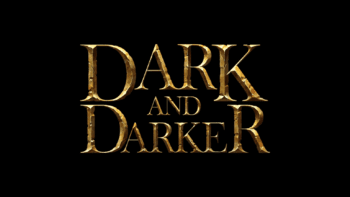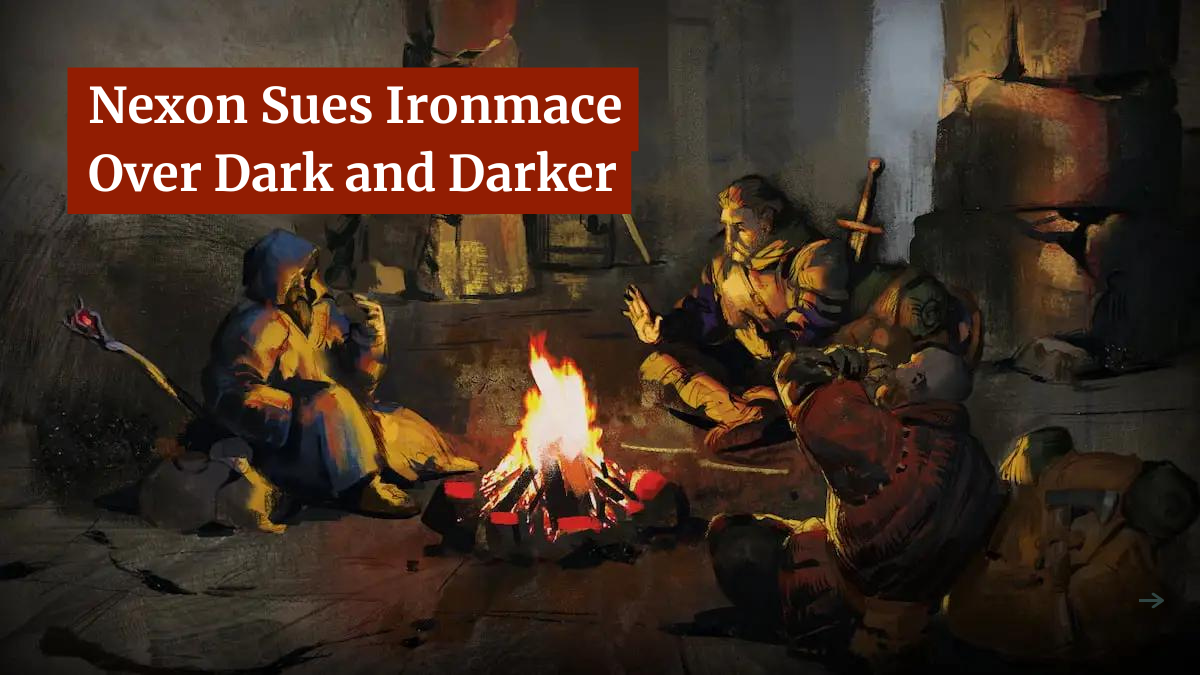Understanding the Dark and Darker Lawsuit

Late last month, we took a look at the long-running battle over the video game Dark and Darker.
To call the case a wild one would be a gross understatement. It pits the large Korean developer Nexon against the upstart Ironmace.
Nexon, using various channels, alleges that one of their employees, without permission, moved a large volume of game project data to a private server while working from home during the pandemic. Nexon then alleges that he used that data, along with members of his team that he brought with him, to found Ironmace and develop Dark and Darker.
Since then, the dispute has been both vicious and public. It has included a police raid on Ironmace’s headquarters in Korea, Dark and Darker being pulled from Steam and Ironmace posting a lengthy response to the allegations, which included having an AI show that many of the concepts were not original.
One thing that had not happened was a lawsuit in the United States. That, in turn, was filed on April 14 in the Western District of Washington. In that case, Nexon has filed a lawsuit alleging both misappropriation of trade secrets and copyright infringement against both Ironmace and two of its founders, Ju-Hyun Choi and Terence Seungha Park.
So does the complaint offer any new information or evidence? Let’s take a look at the claim and see exactly what Nexon is alleging and what the likely defenses would be.
The Lawsuit
The lawsuit makes two separate claims for relief.
- Misappropriation of Trade Secrets: That Choi and others took confidential company information and used it when making Dark and Darker.
- Copyright Infringement: That Choi and others at Ironmace used copyright-protected works owned by Nexon when making the game.
Much of the emphasis of the claim is on the trade secret allegations and, to that end, Nexon makes several claims that seem to be contradictory to the public defenses provided by Ironmace.
First, Nexon claims strongly that it did not give Choi permission to use a private server while working remotely. They claim that such a server was not necessary due to cloud-accessible ones available through the company and was in contradiction to other security procedures they had. They further claimed that Choi was terminated from his position because of this.
Ironmace, in their public rebuttal, claimed that Choi was given permission. However, neither side seems to have it in writing, as neither cite an email or an agreement.
One area where there is allegedly something in writing is Nexon alleging that Choi signed a written forensic agreement to turn over his personal server for examination. However, they claim he did not do that and instead deliberately deleted.
To put it modestly, this is a potentially serious allegation. Destroying evidence that you know or should have known would be relevant to legal proceeding and in spite of signing an agreement that you wouldn’t do so is serious.
We saw this in the Shepard Fairey case, when Fairey admitted to destroying evidence about the origins of the Obama Hope poster. The revelation brought the case to a crashing halt and forced Fairey to accept a settlement. The reason is that any evidence that is willfully destroyed is, generally, presumed to be evidence against that party.
That could pose a serious issue here, as it might actually aid Nexon in establishing that files were removed from that server, making the trade secret issue easier for them.
As far as the copyright side of things goes, Nexon’s arguments are more complicated. They recognize in the lawsuit that individual elements from both games are taken from earlier works, most notably Dungeons and Dragons. However, the claim doesn’t hinge on the copying of any one or two elements, but all the elements together.
For example, in their complaint, they note that both games had the exact same six classes of characters despite there are 12 in the original Dungeons and Dragons and other, similar games had much less overlap. They also noted that the art styles between the two games were very similar, including many similar features, even though both were distinct from the source material.
A similar argument is made when looking at the characters from the Unreal Engine Marketplace. Though they admit that they don’t hold the copyright to the models that both games used, they claim protection in the selection of the models used, noting that Ironmace used many of the same models as a starting point despite multiple ones being available.
The lawsuit says in part, “Nexon was required to use creativity to select the assets that best expressed its idea for P3. Defendants copied this creative selection.”
Looking Ahead
Right now, the lawsuit leaves a lot of questions that will have to be answered in discovery or otherwise as the case moves forward.
First is whether Choi had permission to use a personal server at all and, if so, who granted that permission? Both sides have very different stories here, and neither have documentation that we know of. It’s entirely possible that both are telling the truth of what they understood, they just had very different understandings.
That said, if Choi did sign an agreement to hand over his server and failed to comply, despite knowing that there was a potential legal dispute, that is not going to go over well as the case moves forward. That could be very harmful to Ironmace.
As for the copyright claims, those are going to be challenging. To be clear, a creative selection can be protected by copyright. However, copyright does not protect ideas and that raises two issues for Nexon, namely The Merger Doctrine and Scènes à faire.
The Merger Doctrine basically says that, if an idea can only be expressed a certain number of ways, then the expression of that idea cannot be protected. Scènes à faire, on the other hand, make it impossible to claim copyright on genre tropes, in this case, those might include, a knight in armor, a bard with a lute, etc.
Nexon must first prove that its selection was creative and original enough to qualify for copyright protection, and then they have to prove that the elements copied were not examples of either The Merger Doctrine and Scènes à faire.
It is not impossible, but it is difficult.
That said, Nexon also made allegations that source code was copied, but any evidence would likely have to be procured during discovery. In short, we can’t really say much about this and Nexon only says that Ironmace has not shared the code with them and that, “the fact of substantial similarity will be revealed when Ironmace is required to disclose its source code in discovery.”
In the end, the copyright claims are going to be difficult but a lot of both claims hinge on things that are either not known or, in some cases, may not be knowable.
It’s obvious that this case isn’t dying down any time soon.
Bottom Line
In making their public defense, Ironmace did a decent job showing that the alleged code similarities were largely attributable to shared resources and that the similarities between the games were all tropes of the genre.
However, Nexon isn’t denying this. They are claiming that their specific selection of those elements is protectable and that Ironmace’s copying of those elements was an infringement. While that’s still a difficult argument with a lot of hill to climb, it’s different from what Ironmace was pointing out.
In reality, the case is more about trade secret issues and hinges on the agreements between Choi and Nexon. Did Choi have permission to use a personal server? Did Choi agree to turn over his server and then wipe it? Did he have a one-year non-compete clause in his contract? Is that clause enforceable?
We don’t know these things and won’t until the case moves farther along, possibly until discovery is complete.
However, Nexon is being painted as a company that is simply filing a lawsuit and trying to shutter a competing game. That is not the impression I get. I’m not saying definitely that Nexon will win, litigation is inherently unpredictable, but they do seem to have arguments worth bringing to court.
In the end, I stand by my conclusions in the previous article, this was an avoidable and predictable legal battle that nobody comes out looking great in. No one really benefits from this fight as Nexon appears to be a bully and Ironmace has a dark cloud hanging over the game.
This didn’t have to happen. Dark and Darker players shouldn’t have to torrent the latest version to do a play test, and Nexon shouldn’t have to bring very expensive litigation to court. However, the opportunity to head off this lawsuit was missed in 2021 and now we’re seeing the consequences of that.
Want to Reuse or Republish this Content?
If you want to feature this article in your site, classroom or elsewhere, just let us know! We usually grant permission within 24 hours.
